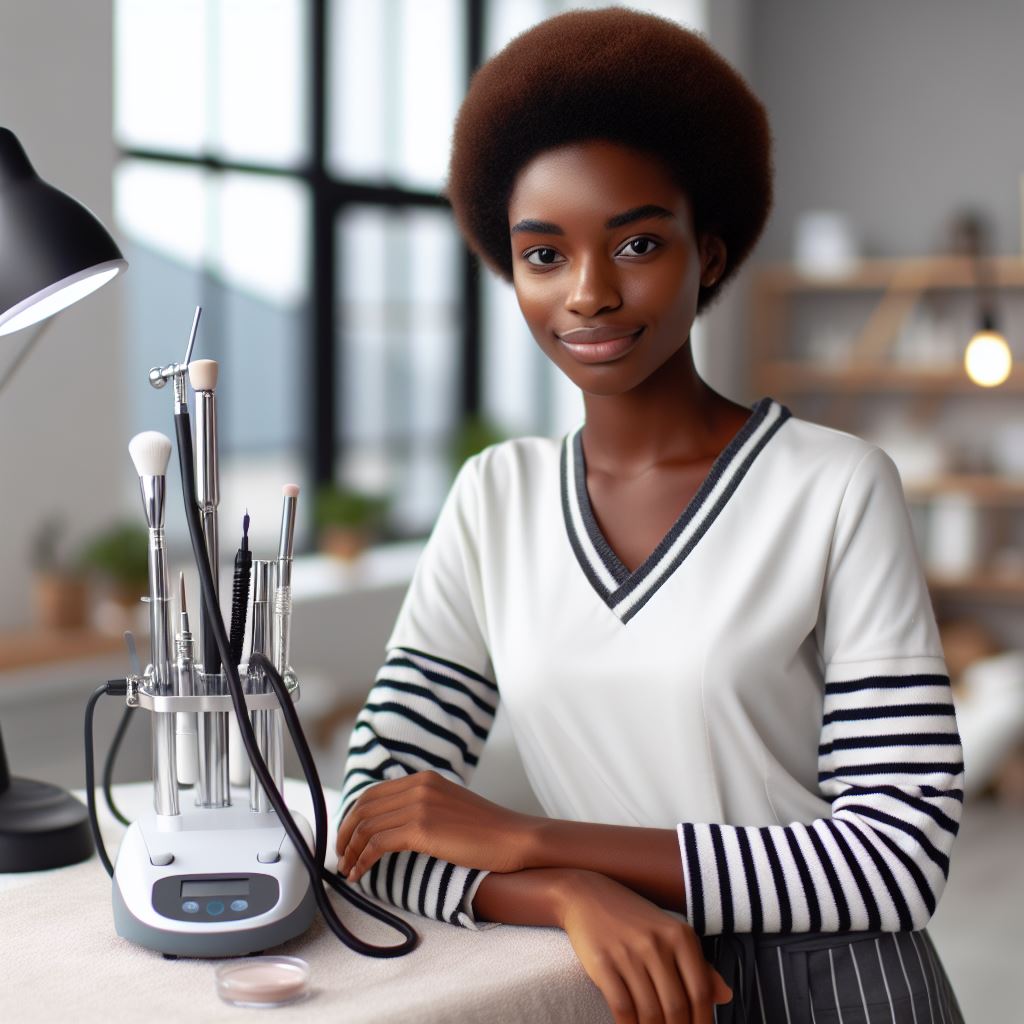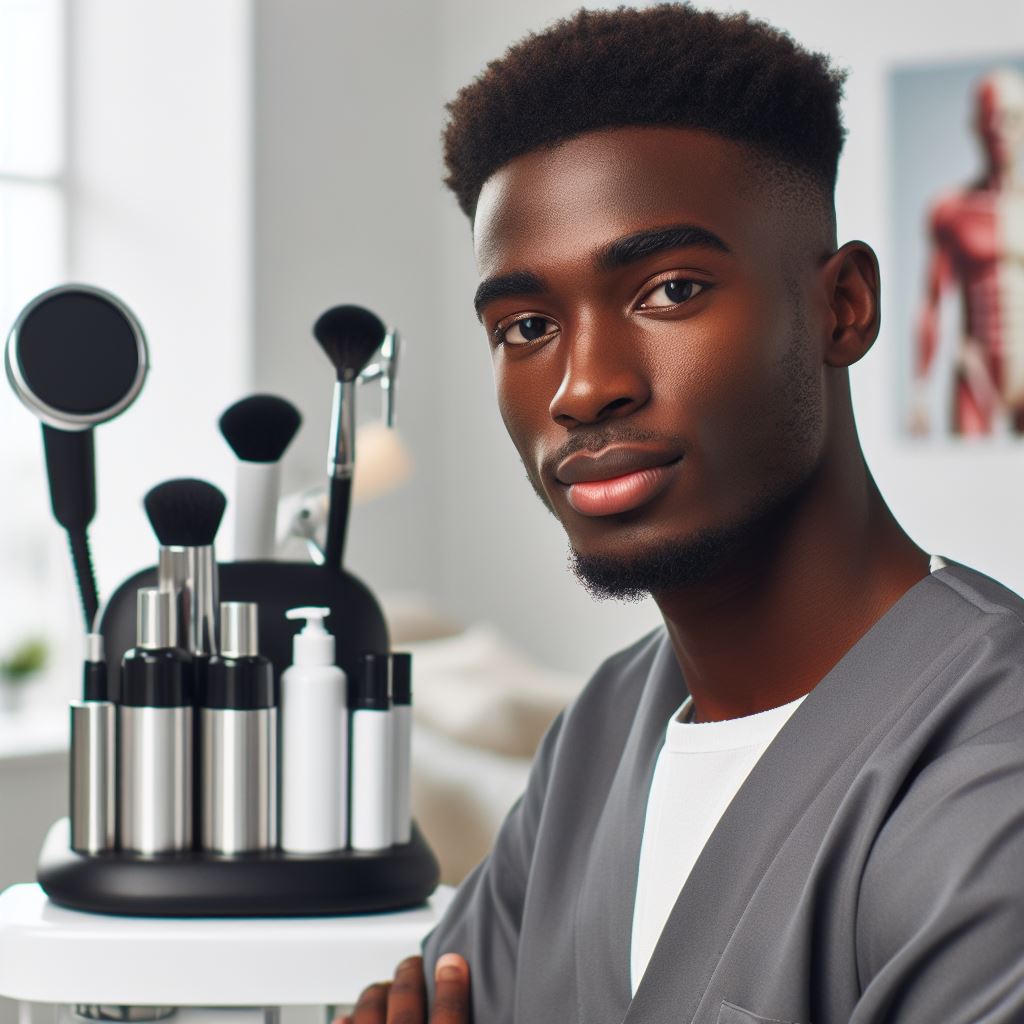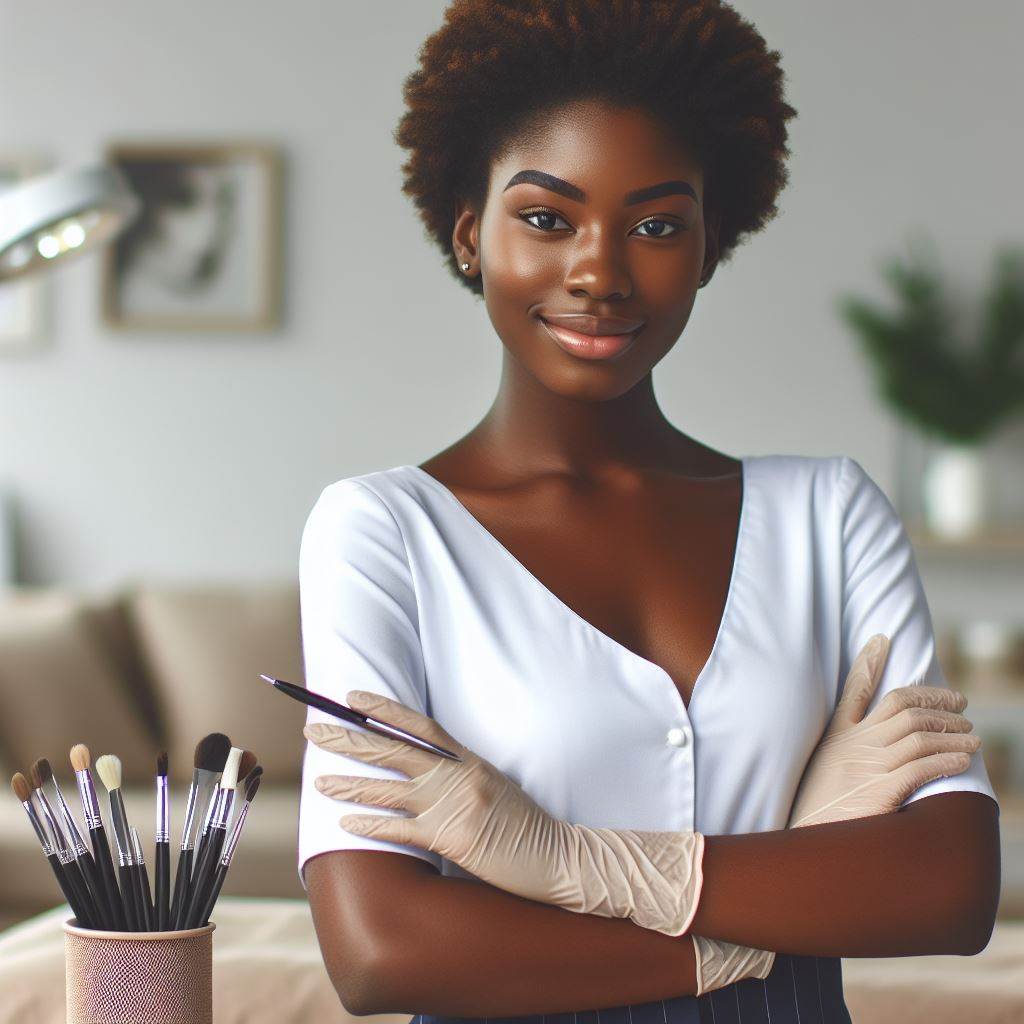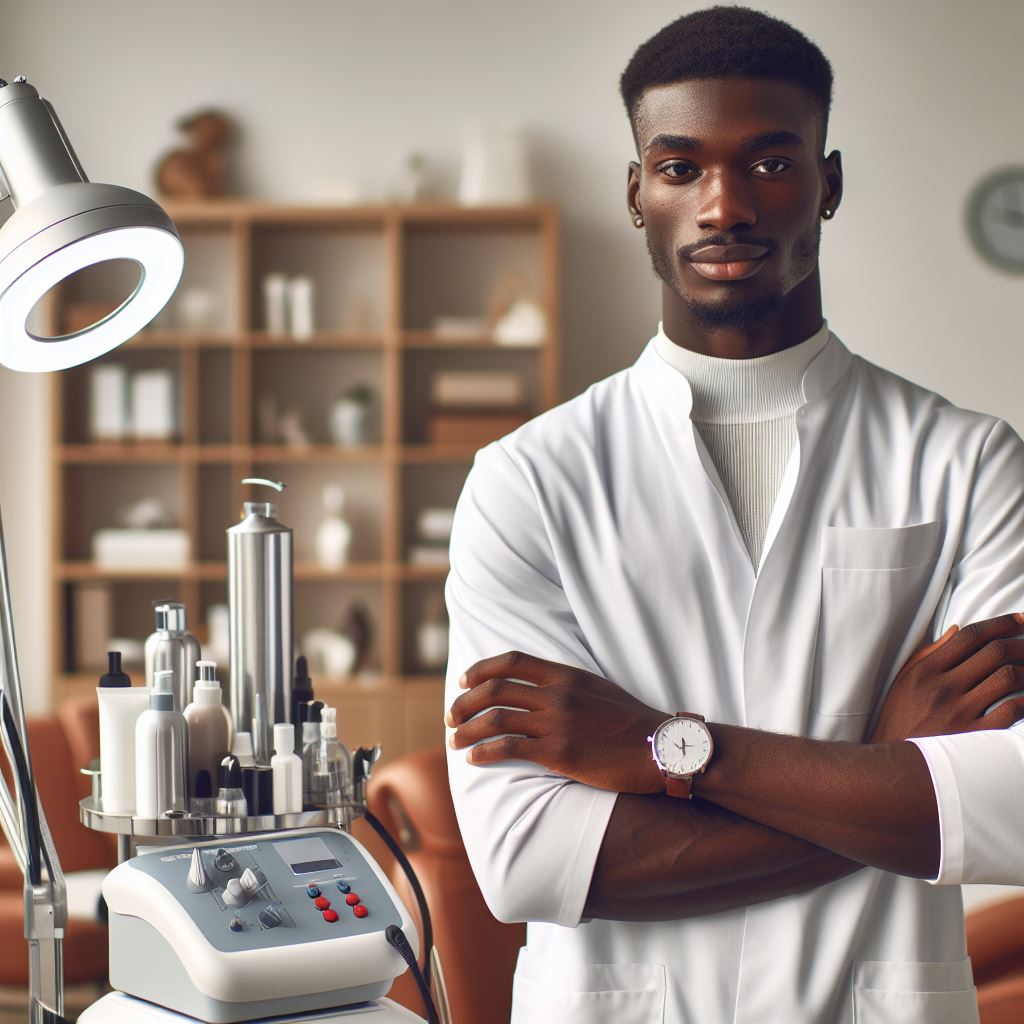Introduction
Hygiene in beauty salons is paramount. It’s not just about aesthetics; it’s about safeguarding health. Clients entrust their well-being.
Maintaining impeccable cleanliness sets a standard. It reflects professionalism and care. Neglecting hygiene risks tarnishing reputation.
Word spreads fast in the beauty industry. A single lapse can ripple into detrimental consequences. A pristine environment assures client comfort.
They should feel safe and pampered. Hygiene is more than a legal obligation. It’s a cornerstone of customer satisfaction.
Infections or accidents due to uncleanliness are unforgivable. A salon’s success hinges on trust. Clients expect sterile instruments and sanitized spaces.
Hygiene lapses can shatter that trust. Reputation takes years to build, seconds to destroy. Hygiene isn’t just about visible cleanliness.
It extends to every aspect, including air quality. Dust and allergens compromise comfort. A sterile environment promotes relaxation.
It’s not just about the surface. Tools and equipment must undergo rigorous sterilization. Neglect invites bacteria and infections.
Sterile environments aren’t just a luxury; they’re a necessity. The purpose of this blog is to elucidate. It aims to underscore the significance of hygiene.
Moreover, it offers actionable insights. It provides tips to maintain pristine standards.
By adhering to hygiene protocols diligently, salons safeguard their reputation. Clients deserve nothing less than perfection.
Establishing a Cleaning Routine
Regular cleaning and sanitization are crucial in maintaining hygiene standards at a beauty salon.
Failure to follow a strict cleaning routine can lead to the spread of bacteria and infections among clients and staff.
Importance of Regular Cleaning
Cleaning the salon on a daily basis helps in creating a safe and comfortable environment for both the employees and customers.
It also ensures that the salon meets regulatory standards and guidelines.
Specific Areas and Surfaces to Clean
Some key areas and surfaces that need regular cleaning include:
- Countertops and surfaces
- Salon chairs and equipment
- Tools and instruments
- Floors and carpets
- Bathroom and washroom facilities
- Waiting and reception areas
It’s important to pay special attention to areas that come in direct contact with clients or where bacteria and germs are likely to accumulate.
Tips for Creating a Cleaning Schedule
To maintain hygiene in your beauty salon, consider the following tips for creating a cleaning schedule and checklist:
- Assign specific cleaning tasks to each staff member
- Set aside time at the beginning or end of each day for cleaning
- Invest in high-quality cleaning products and equipment
- Regularly disinfect and sanitize tools and equipment
- Follow manufacturer’s instructions for cleaning products
- Keep a checklist of tasks and ensure they are completed daily
- Periodically deep clean the salon to tackle hard-to-reach areas
- Train all staff members on proper cleaning procedures
By following these tips and establishing a cleaning routine, you can ensure that your beauty salon maintains high standards of hygiene and safety for everyone who walks through the doors.
Read: Common Mistakes to Avoid in Beauty Therapy
Proper Storage of Tools and Supplies
Properly organizing and storing tools and products in a beauty salon is crucial for maintaining hygiene and efficiency. Here are some important points to consider:
Importance of Organizing and Storing Tools and Products Properly
- Prevents cross-contamination: By separating clean and dirty tools, you can reduce the risk of spreading bacteria and infections.
- Extends the lifespan of tools: Proper storage helps protect tools from damage and ensures they last longer.
- Improves efficiency: Organized tools and products make it easier for staff to find what they need promptly, saving time during services.
Guidance on Separating Clean and Dirty Tools
It’s essential to have a clear system for differentiating between clean and dirty tools. Here’s how you can do it:
- Color-coding: Use different colored containers or labels to distinguish between clean and dirty tools.
- Designated storage areas: Keep clean tools in a separate area from dirty ones to avoid accidental contamination.
- Regular cleaning: Implement a routine for cleaning and sterilizing tools after each use to maintain hygiene standards.
Storage Solutions for Different Types of Tools and Products:
Choosing the right storage solutions based on the type of tools and products is essential for efficiency and organization. Here are some recommendations:
- Drawer organizers: Use dividers in drawers to separate tools like brushes, combs, and scissors for easy access.
- Wall-mounted shelves: Install shelves on the walls to store larger tools and products like hairdryers, curling irons, and styling products.
- Storage containers: Invest in storage containers with compartments to keep smaller items like clips, pins, and cotton pads organized.
By following these guidelines and recommendations for proper storage of tools and supplies, beauty salon owners can create a clean, organized, and efficient workspace for their staff and clients.
Read: Benefits of Professional Beauty Therapy Training
Staff Training and Education
Proper staff training and education are essential in maintaining hygiene in a beauty salon. Here are some key points to consider:
The need for ongoing education on hygiene practices
It’s crucial for salon staff to be well-informed about the latest hygiene practices to ensure the safety of clients and staff members.
Regular training sessions on proper hygiene protocols should be a priority.
Importance of continuous training on proper sanitization techniques
Proper sanitization techniques are the cornerstone of maintaining hygiene in a beauty salon.
Staff members should receive training on how to clean and disinfect tools, equipment, and workstations effectively.
Provide resources for staff to stay updated on industry standards
Beauty industry standards are constantly evolving, so it’s important for staff to stay informed about the latest guidelines and regulations.
Provide access to resources such as online courses, workshops, and industry publications to help staff stay updated.
By implementing these strategies, beauty salon owners can ensure that their staff is well-equipped to maintain a high level of hygiene and sanitation in the salon, creating a safe and clean environment for clients and employees alike.
Client Communication and Education
Role of client education in maintaining hygiene standards
Client education is pivotal in upholding hygiene standards. Clients must grasp the significance of adhering to hygiene practices.
Educating them ensures they comprehend why certain protocols are in place.
Importance of communicating salon hygiene protocols to clients
Communication of salon hygiene protocols to clients is crucial. It fosters transparency and trust between the salon and its clients.
Clear communication ensures clients are aware of the steps taken to maintain hygiene.
Suggestions for educating clients on proper salon hygiene practices
- Display informational posters about hygiene practices in visible areas.
- Provide pamphlets detailing hygiene protocols during appointments.
- Conduct regular workshops or seminars on salon hygiene for clients.
- Utilize social media platforms to share hygiene tips and practices.
- Train staff to communicate effectively with clients about hygiene protocols.
- Encourage clients to ask questions and seek clarification regarding hygiene practices.
- Demonstrate proper hygiene techniques during client appointments.
- Offer incentives for clients who demonstrate good hygiene practices.
- Create a welcoming environment where clients feel comfortable discussing hygiene concerns.
- Continuously update clients on any changes or improvements in salon hygiene protocols.
Client education is not just about informing; it’s about empowering clients to be active participants in maintaining hygiene standards.
By fostering a culture of education and communication, both the salon and its clients contribute to a safer and healthier environment.
Read: Marketing Tips for Beauty Therapists in Nigeria
Transform Your Career with Expert Guidance
Get personalized mentorship consulting that’s tailored to your unique path. Our expert advice is actionable and exclusive.
Get Started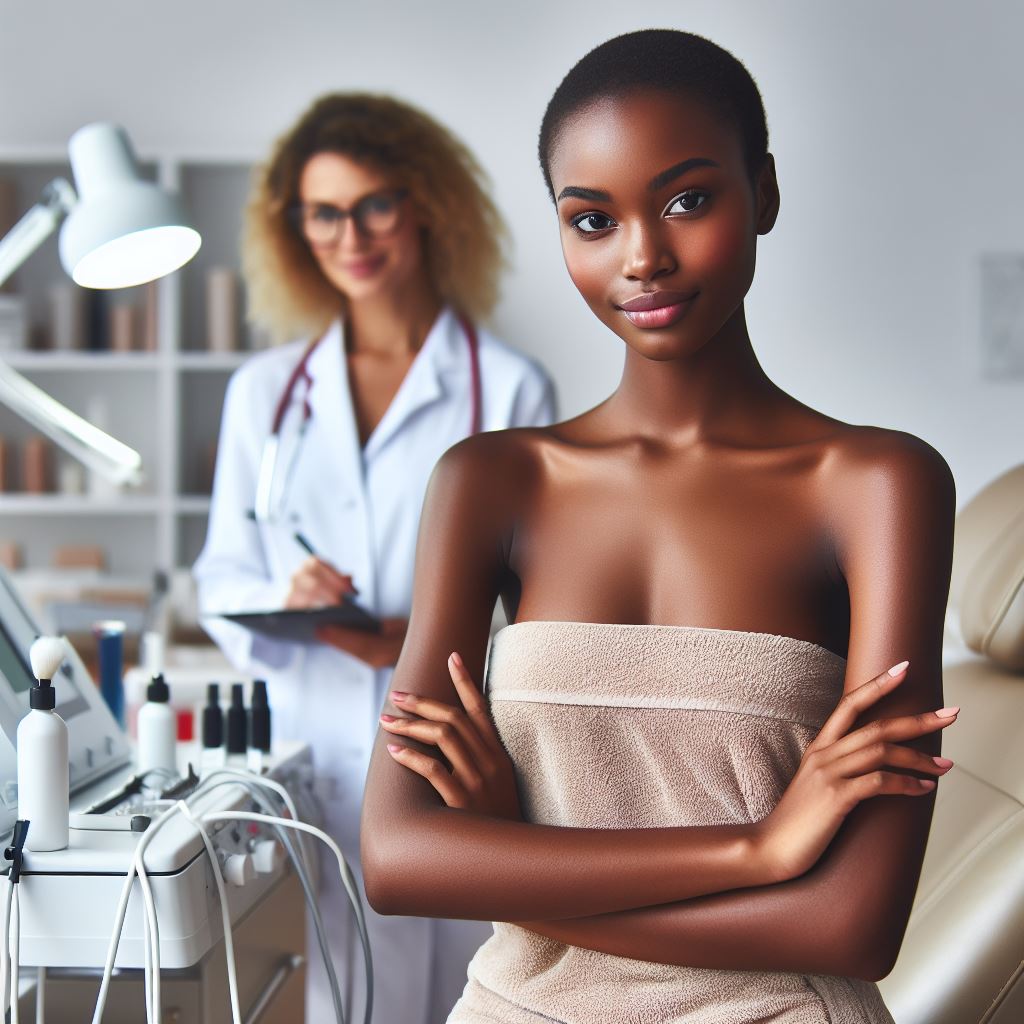
Personal Hygiene Practices
Importance of personal hygiene for salon staff
Personal hygiene is crucial for salon staff to maintain a clean and professional environment.
Staff members should prioritize their personal hygiene to ensure the safety and well-being of their clients.
Cleanliness reflects positively on the salon and helps build trust with customers.
Guidelines on proper grooming and handwashing techniques
Proper grooming involves daily bathing, brushing teeth, and wearing clean uniforms.
Staff should also maintain trimmed nails, neat hair, and minimal jewelry to prevent the spread of germs.
Handwashing is essential before and after each client interaction, using soap and warm water for at least 20 seconds.
Impact of staff personal hygiene on salon cleanliness
Staff personal hygiene directly affects the cleanliness of the salon.
Dirty uniforms, unkempt hair, or unclean hands can contribute to the spread of bacteria and viruses.
Maintaining good personal hygiene practices can help prevent the transmission of infections and promote a healthy salon environment.
Read: Guide to Starting a Mobile Beauty Therapy Business
Use of Disposable and Single-Use Items
Benefits of Using Disposable Items in a Salon Setting
- Helps prevent the spread of infections and diseases between clients
- Eliminates the need for sanitizing and cleaning reusable items
- Provides a fresh and hygienic experience for each client
- Builds trust and credibility with clients who prioritize cleanliness
- Reduces the risk of cross-contamination in the salon environment
Different Types of Single-Use Products Available for Salons
- Disposable gloves for hairstylists, nail technicians, and estheticians
- Disposable capes and aprons to protect clients’ clothing
- Disposable spatulas and applicators for skincare treatments
- Single-use disposable razors for shaving services
- Disposable towels and wipes for cleaning surfaces and tools
Recommendations for Incorporating Disposable Items into Daily Salon Practices
- Stock up on a variety of disposable items to meet different needs
- Educate staff on the proper use and disposal of single-use products
- Implement a system for managing inventory and restocking supplies
- Communicate the benefits of disposable items to clients to promote awareness
- Regularly monitor and assess the effectiveness of using disposable items
Regular Inspections and Audits
Regular inspections and audits are crucial in maintaining hygiene standards in a beauty salon.
Importance of Regular Inspections
- Regular inspections help identify any potential hygiene issues before they escalate.
- It ensures that the salon remains clean and safe for both employees and clients.
Steps for Conducting Internal Audits
- Designate a team responsible for conducting regular inspections.
- Develop a checklist of areas to inspect, including workstations, tools, and common areas.
- Schedule audits on a weekly or bi-weekly basis to ensure consistency.
Suggestions for Addressing Areas of Improvement
- Provide training sessions for staff on proper cleaning procedures.
- Implement a system for tracking and resolving hygiene-related issues.
- Encourage open communication to address concerns and implement solutions promptly.
Regular inspections and audits are key to maintaining hygiene in a beauty salon and should be prioritized to ensure the well-being of all individuals involved.
Conclusion
Keeping a beauty salon clean and hygienic is crucial for the health and safety of both clients and staff. Here are some essential practices to follow:
Ensure that all surfaces, tools, and equipment are cleaned and disinfected frequently to prevent the spread of germs and bacteria.
Properly sterilize all tools that come into contact with clients’ skin to avoid infections and skin irritations.
Whenever possible, use disposable items like towels, capes, and brushes to minimize the risk of cross-contamination.
Encourage staff to wash their hands regularly and use hand sanitizers to prevent the spread of germs and maintain cleanliness.
Dispose of all waste, including used towels and tissues, in designated bins to keep the salon clean and odor-free.
Ensure that all staff members are trained on hygiene protocols and understand the importance of maintaining a clean environment.
Maintaining hygiene in a beauty salon is essential for the health and safety of everyone involved.
By following these practices, you can create a clean and safe environment for both staff and clients.
Implement these guidelines in your salon today and experience the positive impact of a hygienic environment.

